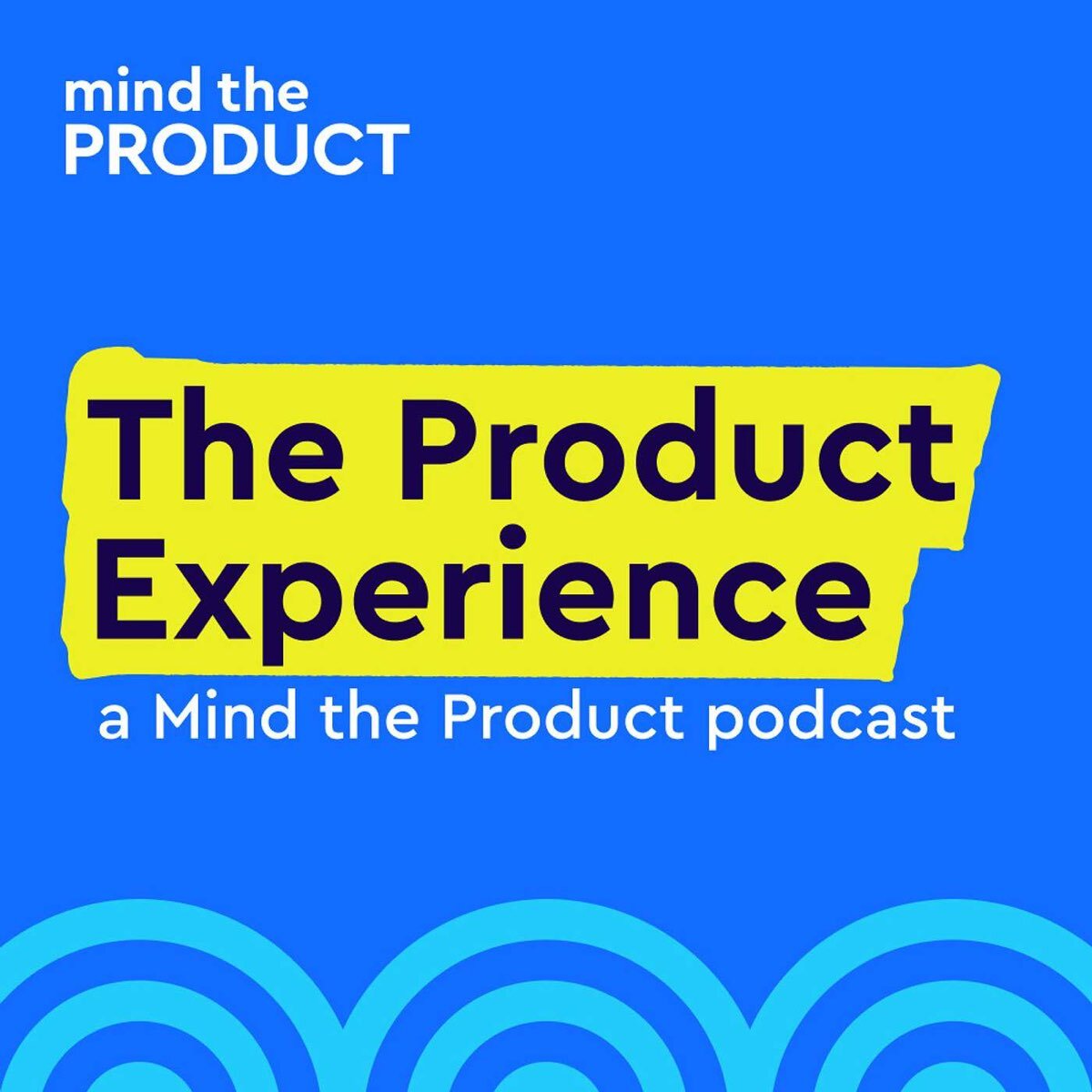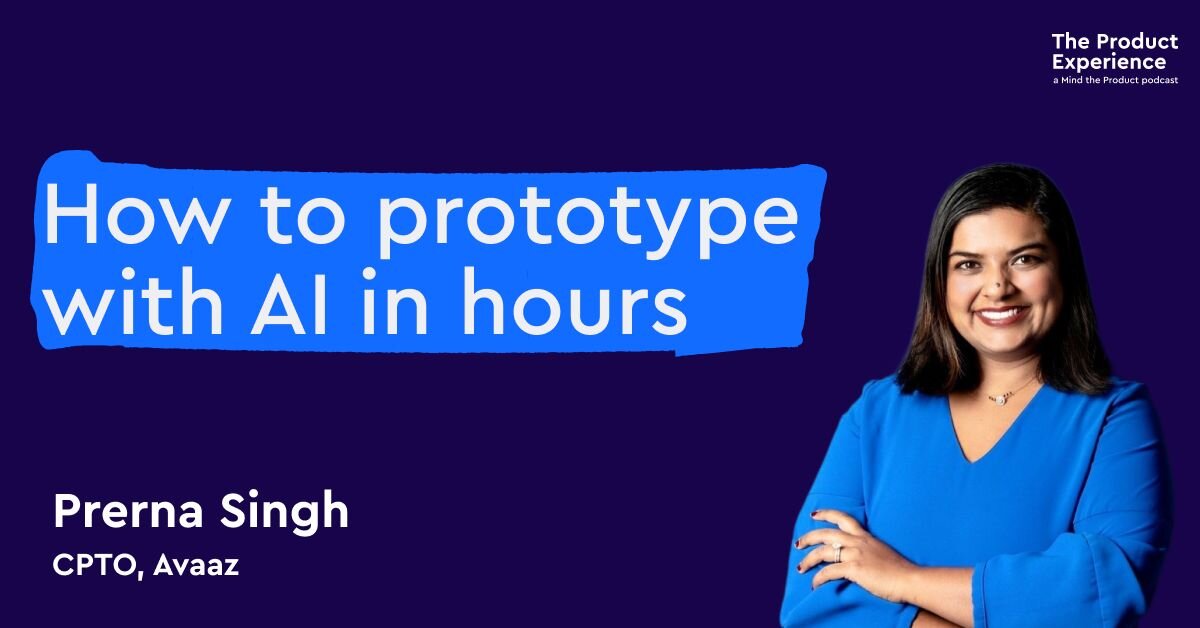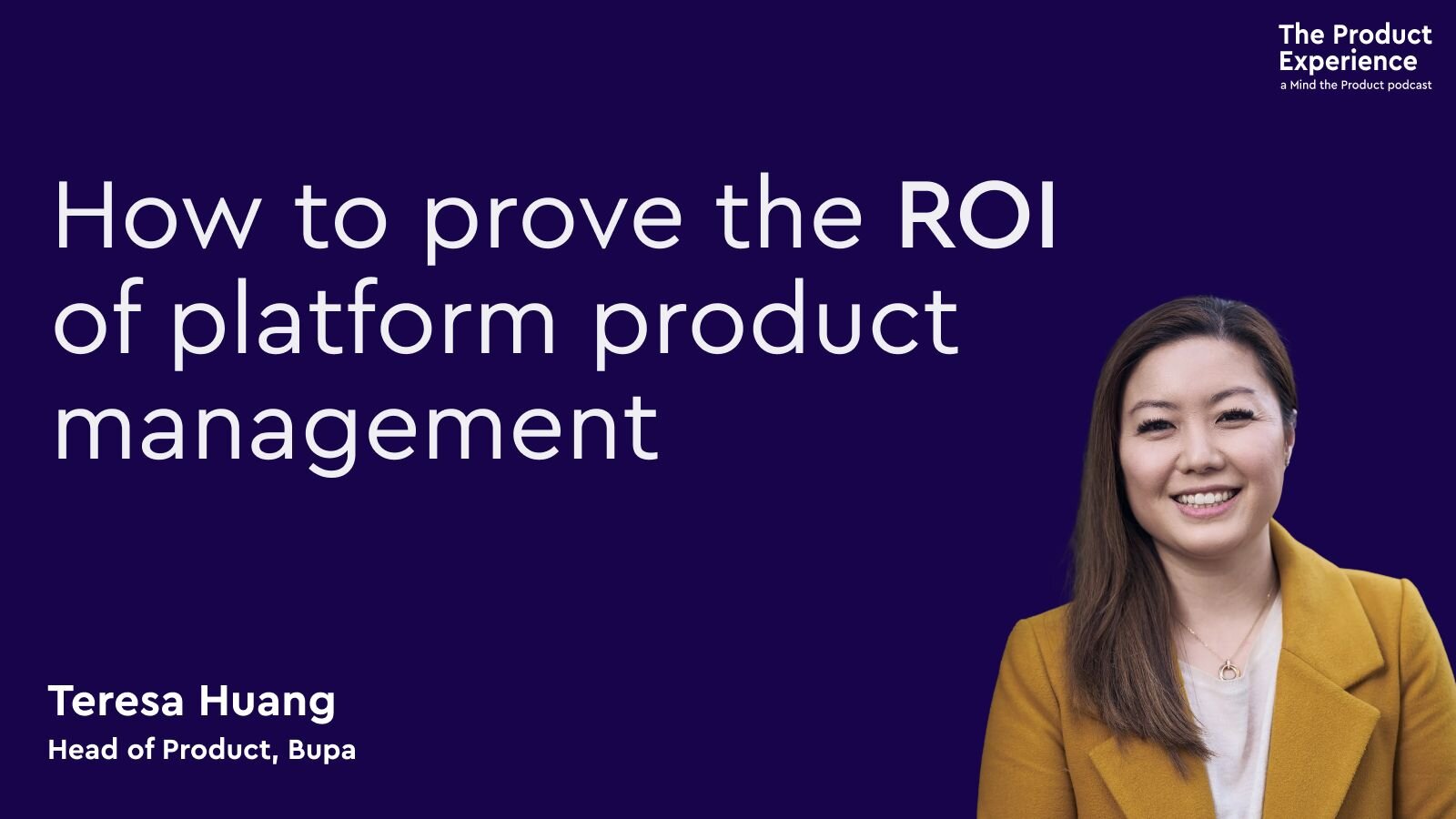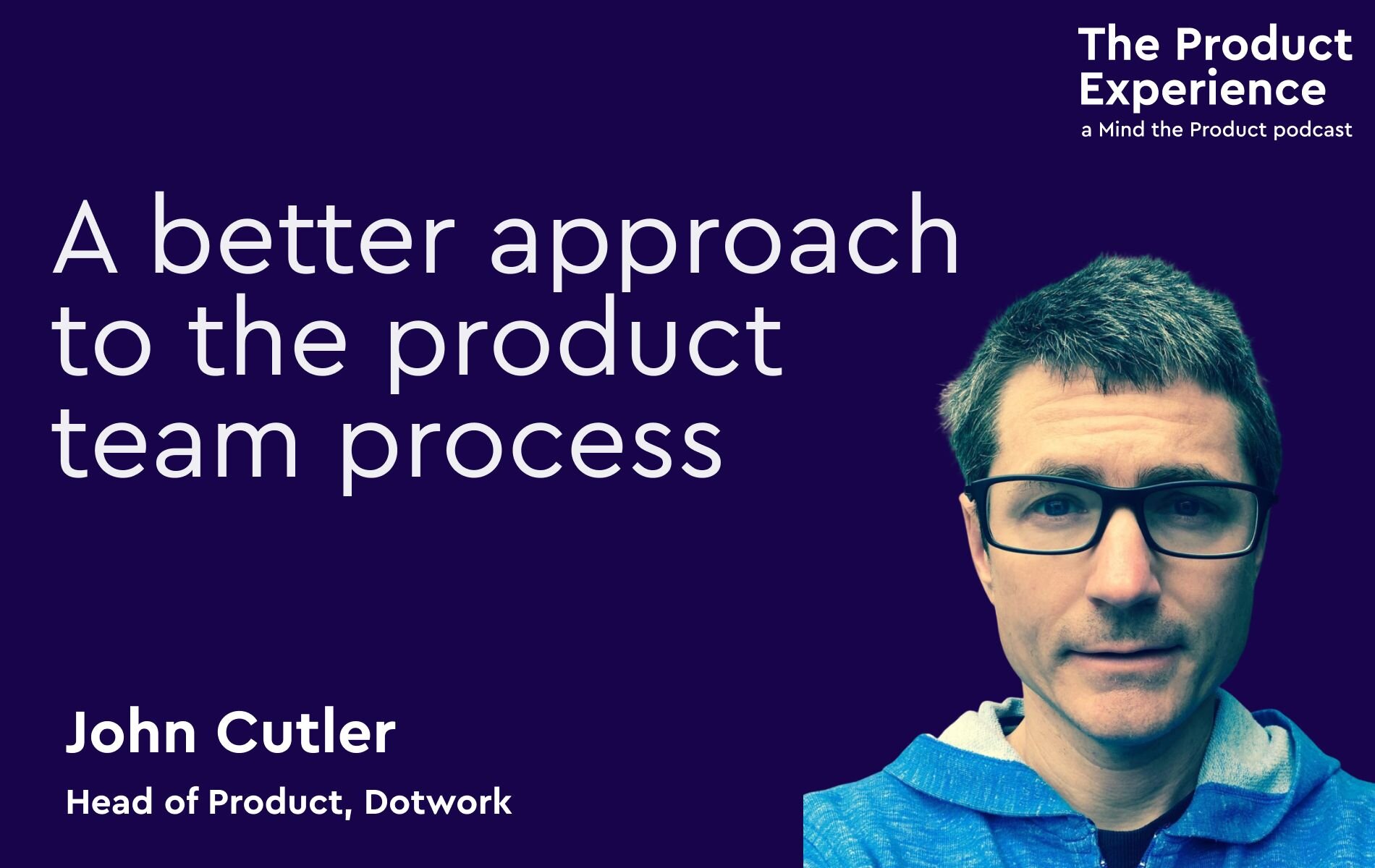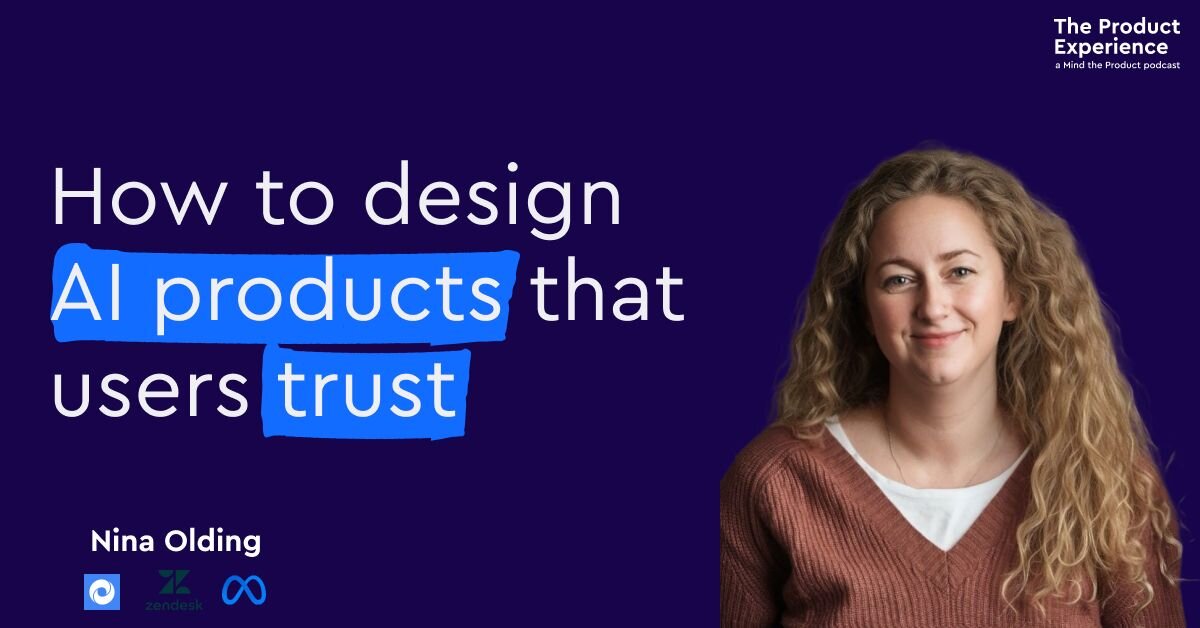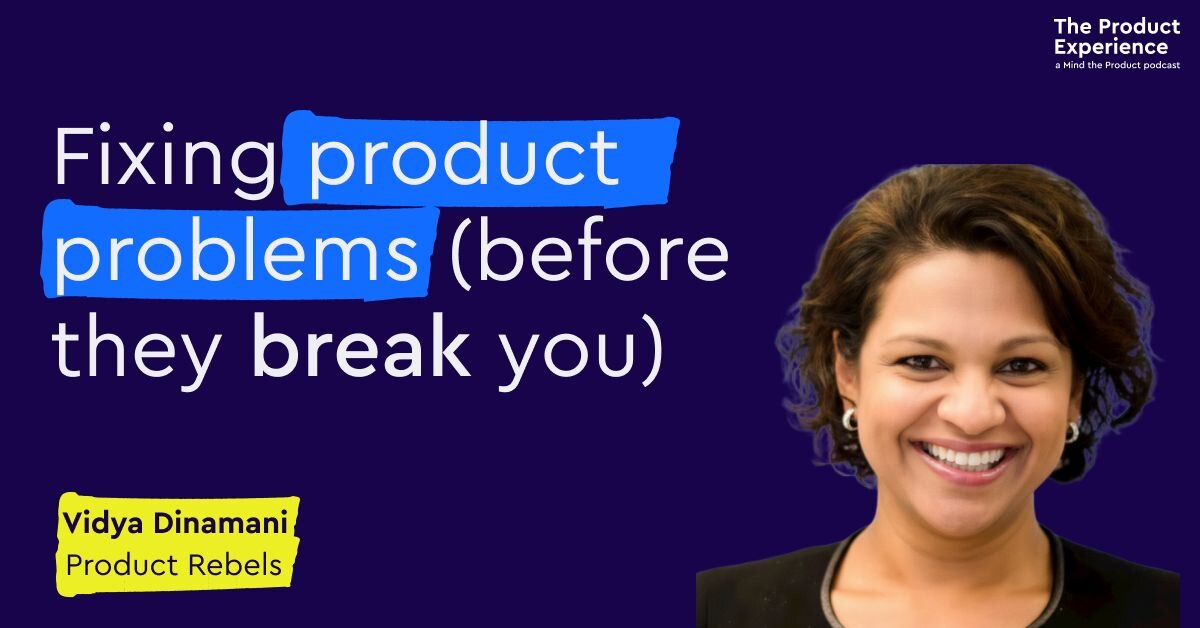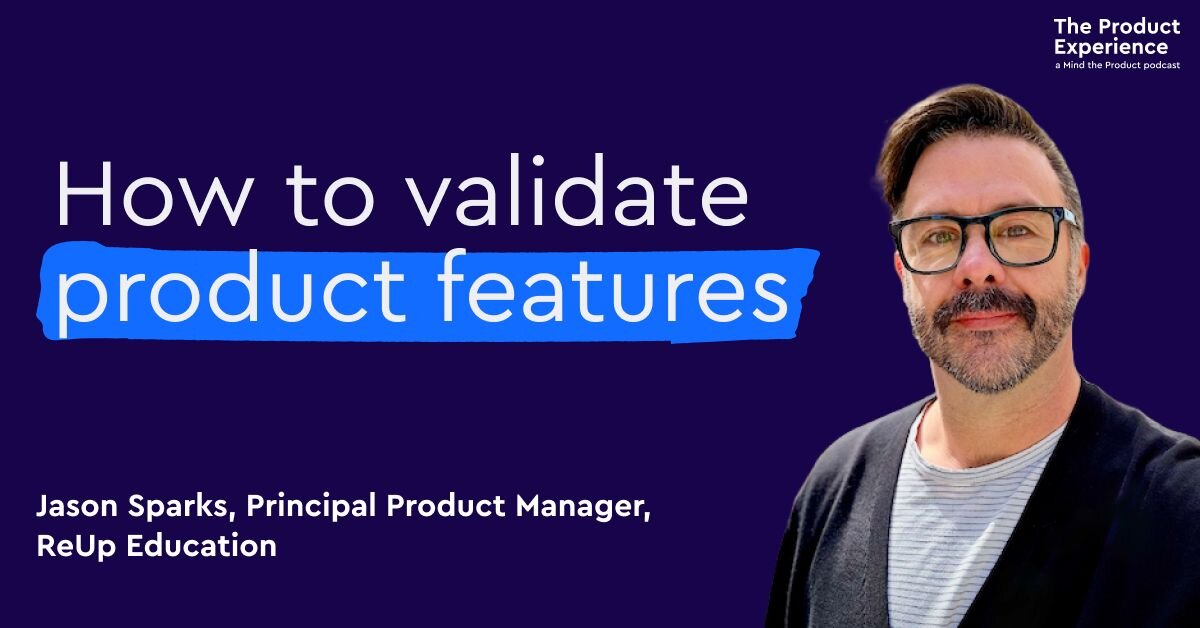Chapters
Featured Links: Follow Lily on LinkedIn and Twitter | Follow Randy on LinkedIn and Twitter | 'Hiring and Developing Product Managers' feature at Mind The Product | Guests included in this episode: Mel McVeigh, Lucie Buisson, Dinushi Pieries, Alex Watson, Hoang Nguyen, Ben Foster, Tobias Freudenreich, Itamar Gilad, Kax Uson, Namrata Sarmah, Kirsten Mann, Amy Wagner
Episode transcript
Lily Smith :
It's that time of year.
Randy Silver:
Ooh, what time of year is that? Is it the time when we look back and make a list of who is naughty and who is nice and then decide who not to bother giving presents to?
Lily Smith :
No, randy, everybody gets a present, even if they've been naughty, I wonder what I'm getting. Actually, nobody gets a present, sorry, no. It's that time of year when we reflect and pull together some of the really smart things people have said to us After we finish our interview, when we do the podcast.
Randy Silver:
Oh, yeah, and Goughlin, we do these episodes. Okay, everyone. Here's a peek behind the scenes. For the last year we've been asking everyone we interview, three extra questions, and this week we're happy to share some of the best answers to the first one of those questions.
Lily Smith :
And drum roll. I did that quite well, actually, sweet. We're looking at the answers to the question. What do you look for when hiring someone into a product roll?
Randy Silver:
And we had some amazing answers and some really strong, consistent themes coming through on these. Where should we start, willie?
Lily Smith :
Let's start with our theme song. Actually Hit the music.
Randy Silver:
The product experience is brought to you by Mind the Product. Every week on the podcast we talk to the best product people from around the globe.
Lily Smith :
Visit mindtheproductcom to catch up on past episodes and discover loads of free resources to help you with your product practice.
Randy Silver:
You can also find more information about Mind the Product's conferences and their great training opportunities happening around the world, and online, create a free account on the website for a fully personalized experience and to get access to the full library of awesome content and the weekly curated newsletter Mind. The Product also offers free product tank meetups in more than 200 cities. There's probably one near you, alright. So this is a really big question. What do you look for when hiring someone into a product roll? I remember when I first started interviewing people for product jobs, it was really hard. I wasn't sure what to look for at first. Do you remember when you first started this, willie?
Lily Smith :
Yeah, so I only just started hiring product people this year and, having worked with lots of product people before and having had lots of great advice from other product people that I know, I was very successful in hiring some fantastic product people earlier this year.
Randy Silver:
Well, done you? Maybe you use some of the advice we're going to cover today. Why don't we start with something really practical, though? There's a couple of things that I thought were really great answers on something practical that you can put into practice straight away. So what do you think is actually the biggest mistake that someone can make in an interview?
Lily Smith :
I think for me, the biggest mistake is really just not having any questions about the company or the product. When you get to the end of the interview and you're like hey, have you got any questions? And if there's like no, I'm fine, and it's a bit like, really, do you really have nothing to ask, I feel like that's a bit of a red flag for me.
Randy Silver:
Yeah, we went into this a little bit more with Mel McFaye from Condé Nast, so why don't we hear what she has to say on the subject?
Mel McVeigh:
First thing I look for is whether or not they've actually tried the product they're interviewing for. I have been in many interviews where the person hasn't even looked at the product so can't talk about it. So it's one of my first and leading questions is what do you think about product?
Randy Silver:
It's an interesting one if you're doing B2B, but for B2C it works perfectly.
Mel McVeigh:
Yeah, true. I mean, if you're B2B, there's probably ways, but then you would need to know the business. So, because you need to be passionate about the thing you're applying for, it isn't just about having skills as a product manager. Often it's about having a type of skills and a type of kind of kind of cultural context that would help mean that you add value to the organization.
Randy Silver:
So I love that answer from Mel, but Something else that came up that I thought was really interesting. A lot of the people that we talked to this year answered the question. They talked about a way that they're trying to find out if the person they're interviewing, you know, has the chops, if they can really do the job, if they can prove it. But there was actually a really clear divide in the way that men and women answered this question.
Lily Smith :
Yeah, so women tended to emphasize the need for greater communication, and this is very general, but in general, men went for more of an attitude of like show me what you've actually done. Let's talk about your practical experience, which is a really interesting observation and maybe one that our listeners can use to their advantage next time they find themselves in an interview.
Randy Silver:
I don't know. Would you favor people trying to do one of those, or would you think to use both sides of this advice?
Lily Smith :
I think you have to respond to the person that is interviewing you. So if they favor one or the other, then you need to. You know you need to go in the direction that they're going in, but at the same time, you know, if you have no opportunity to demonstrate your practical knowledge and skills because the focus is too much the other way, then you should always try and get in a bit at the end. One of my favorite questions in an interview actually is is there anything that you wanted to tell me that you haven't been able to talk about yet? And I think, even if someone doesn't ask this at the end, you should think to yourself is there anything that I wanted to tell you that I haven't been able to yet? And try and get that in at the last minute.
Randy Silver:
So we had a lot of really great answers that were on this. Let's start with the women, though. Let's start with from Content Square. She's the CPO there, and I think this was actually my favorite approach of all of them.
Lucie Buisson:
I think what's super important is to find the right balance between soft skills and hard skills, you know. So you want someone that is good at doing discovery. You want a curious mindset. You want someone that is good with data. You want someone that is good at interviewing customer All those kind of things that I would call as hard skills. But you can have all the hard skills. If you don't have the soft skills, it's not going to work. So what we do at Content Square is that every hiring process ends with a panel and during this panel, each candidate has to present, has a 20 minute presentation about a topic they really care about. We ask them not to talk about work projects. So we had scuba diving, we had why the beer foam, we had what was the story behind Shazam and the goal of this presentation. You present in front of your future manager, your peers and people from sales and customer success, and the goal is really to test your leadership skills and your ability to share a vision and share your passion with the group on any topic. And then it's followed by a conversation. So the candidate has to manage a conversation with like 5 to 10 people with different perspectives, which is also giving us a good idea of how do you manage your stakeholder. So we find this exercise very good, you know, to try to test the soft skills.
Randy Silver:
Is that for people at all levels of product or just for leadership roles?
Lucie Buisson:
Wow, Now all level, but if you are a junior product manager, you're going to have just your future manager and choose a product manager. If you're a product director, you're going to have, you're going to have I see it in most of them, which can be sometimes a bit as caring for product manager but if you are higher, higher level, you're going to have a VP sales or VP marketing or VP customer success, also in the panel.
Randy Silver:
I'm dying to know the people, the customer, the VPs and people like that Are they excited to come to these or are they? Is it tough to get them to come?
Lucie Buisson:
No, they love it because every time it's a new topic and we really push the product manager to make sure we're going to learn something. You know that we're going to be out of this meeting knowing something amazing about surfing or something amazing about I don't know building houses, you know.
Lily Smith :
And let's go straight into this top tip from , from JP Morgan.
Dinushi Pieries:
One thing that I really look for in junior product managers is the ability to think openly and source information. So being curious is the biggest quality, and also being personable. So you don't have to be the most outgoing person out there and certainly not the most talkative, but being a product manager, and especially a platform product manager, requires an inordinate amount of coordination and talking to different characters, some maybe less so responsive to coming in new as product and trying to disrupt things and being able to navigate that world, as well as also being able to inspire product managers around you, both junior and senior, for new hires, and also executives with new ideas. And, most importantly, also your parallel functions like design, user research. Tech is very, very important. So those are the two characteristics I look for.
Randy Silver:
You know we don't have time to put in every great answer we got. So I'm just going to shout out to Leia Taren and Liz Clough, who also give really good answers on this. But you know the men, as we said, they went in a different direction.
Lily Smith :
Alex Watson. I think, when I'm hiring.
Alex Watson:
It's really important that when a PM gives examples of the work they've done, that they're able to narrate that story in a compelling way where you can really understand what the impact was. I find it quite dry if someone just says, oh, and this led to a 10% increase in this figure and you really want to be able to set up. Why was this a problem for the company? Why did it matter? And then, how did you take this approach? What was it that you did? And don't focus too much on the process. I think often companies have their own processes or they have the way that that works. What you want to do is be taken or personally I want to be taken inside the problem. Why did it matter? Why did you take the approach you did and how did you bring that home as a victory or, even better, as an interesting failure that you then kind of learned from and responded to? I think?
Lily Smith :
And that was Alex Watson from Spotify. And on a very similar topic, or the same topic, we have
Hoang Nguyen:
So I will give just some of the main points now and not the overall answer, because it would take too long and would need an entire episode by its own. But in the first stage, when I, for example, I'm in the screening stage, I always look for quantification of impact. And, yeah, of impact, that's it Like. Does this person has a clear quantification of the impact that this person has achieved in their previous roles? If that's something that I can get from the CV by a glance of five seconds or less, this person gets to the next round. Now, while interviewing, I like to apply the same concept like continuous discovery by Teresa Torres, just in the interviewing setting. So instead of asking, yeah, broad, hypothetical questions, I try to ask, hey, tell me about the last time you shipped the feature, and dive deep into the details like, hey, where did the idea come from? What were the challenges along the way. And I also always make sure to include one question at the end of this second part, and that is to ask okay, if you would do it again today, would you do something different? Because I know that every one of us is learning, is growing, and sometimes we have a cool story in the back. But when we think back of it, ah no, back then I didn't knew about this X component of product management. If I would have done it today, I would do it differently. So this essentially also tells me a lot about if this person has grown in the past and, yeah, now sees things differently.
Lily Smith :
That's such a good piece of advice. I love it.
Randy Silver:
Really, there's something interesting that comes out of this as well. So, you know, people talk about proving it, and one of the things I've heard people talk about, or at least I've read about before, is this idea of product sense. Is that something you've ever looked for in an interview?
Lily Smith :
I don't know about product sense, but I would definitely say that there's something in some people having just more of a product mindset, and maybe it is the same thing. I'm not sure. Let's go to Ben Foster from Prodify, who talks a little bit about this. Ben Foster.
Ben Foster:
Product is all about judgment. You're constantly making judgment calls all day, every day, and somebody who can look at the information make smart decisions based on what they see, is the kind of person that I would hire.
Lily Smith :
Nice People who just look at the information is a good start, but anyway.
Randy Silver:
Exactly so, lily. That demystifies product sense a bit. What about attitude in general? We had a few people talk about this and my standard answer, you know except when I need a specific capability in my team is to hire for attitude. You know, I can grow aptitude, I can teach people frameworks and techniques and things, but I can't teach attitude.
Lily Smith :
Yeah, I agree with this and I've heard it lots from other people too. I think this is really interesting. If we flip this of, like you know, thinking about the interviewee in this process, how do you demonstrate your attitude in an interview and really try and get across your, I guess, the way that you think about things and the way that you approach things so that you appear very hireable?
Randy Silver:
So we had some again, a bunch of really great answers on this, and we're going to choose three of them for this topic. So first one is from our friend , a product coach out of Germany.
Tobias Freudenreich:
Most important from my point of view is character and personality, because all the skills we can train easily, but personality and character we cannot easily train. So I look for people who have a collaborative mindset. I look for people who want to learn, who want to grow. I want people who are eager to change stuff and everything else they can learn. So product, from my point of view, is most of it is common sense. We have shiny frameworks to cover that. It's just common sense. But I think most of it can be easily learned, like how do you write a story, how to prioritize a backlog, even how to write a product strategy. That can be learned and it's not super, it's not rocket science. So personality, traits and behavior is way more important, I feel.
Lily Smith :
And Itamar Gilad, product coach and author, went a bit more specific.
Itamar Gilad:
Itamar.
Randy Silver:
Gilad.
Itamar Gilad:
A bunch of things, but I think maybe the top one is customer empathy, so the ability to step outside your body, in a sense, and project yourself into their lives and see the world through their eyes, which is extremely hard for a lot of technical people and a lot of business people, and it's like you need to find these people who are sensitive enough to do it.
Randy Silver:
And let's do one more. We've got Kax Uson, who's the head of product at Atavinta, who totally amped it up even further. I love this answer.
Kax Uson :
There's a lot of people with great skills already, so I'm looking for somebody who is clearly excited about the role, clearly excited about the product, excited about the industry, because skills, whether there are gaps or not, can be learned. But excitement, when people are excited to work on the things that you're working on, it spreads and there's also the hunger then to learn more and maybe learn faster, but excitement is amazing.
Lily Smith :
I absolutely love Kax's answer on that, and it's definitely one that I'm going to be stealing when I think about hiring next time. So if you can't get excited, then yeah, go home.
Randy Silver:
So, lily, there's one question I hate to ask, and I really hate being asked, and it's about the question about where you're going to be. Where do you see yourself in a few years' time?
Lily Smith :
Oh, okay. Yeah, I don't have a good answer for that right now, but I love Nam's take on this and what she looks for, so let's have a quick lesson to Nam.
Namrata Sarmah:
That's a great question. I look for ambition and that's for product people at all levels. I always ask them where they see themselves or what they want to become in the next kind of three to four years time and I do expect an answer from them. And there's no right or wrong answer, there's no stupid answers here, but I do expect some answer because I think, again, ambition is important. I think you know if you're ambitious, you're going to work hard and I think we all want hardworking people in our teams.
Randy Silver:
So I love Nam's answer, but I think I might even like Kirsten Mann's answer better. She kind of takes it and looks backwards instead of forwards.
Lily Smith :
Kirsten an.
Kirsten Mann:
It's probably quite standard, I think, in terms of what I've read from other people. But curiosity is key, like are you actually interested in things and you know what's brought you to this and really probing that. But traits like resilience and tenacity are so key because product roles are tough and if you're a bit of a delicate flower, I think it's a hard gig right. So be able to have they got that kind of resilience to survive and get critiqued all the time and for people not to really love you and be happy with you. All the time Track and that's shown in track records and learning. So one of my favorite interview questions that I typically will ask people is are we allowed to swear? Or when allowed to swear? You can, you can beep it, what? Where did you fuck up Right, where did you fuck up and what have you learned from that? And in Australia we are allowed to ask that in interview questions and fascinating I with the people who say I've never had any issues, like really that's amazing, congratulations. But it also says me I don't think you're really learning from what you're doing. So that's, that's typically that and what does that mean? Honesty, self-reflection, all of those kind of things really important to me as well. Awesome.
Randy Silver:
So if you say I've never fucked up, it means that what they're actually saying is I've just fucked up this interview.
Kirsten Mann:
Yeah, exactly.
Lily Smith :
Exactly, exactly. And there's one trait listening that came up again and again from people like Dave Martin, but Amy Wagner had a great way of how to look for this in an interview Amy Wagner, amy Wagner, amy Wagner.
Amy Wagner:
So product people, product people that listen to their whole team that is number one on the list and people who are not just guided by their own internal vision, but product people who look at the problem they're trying to solve and try and find evidence to back up the decision that they're trying to make. And then, of course, evidence is only evidence if it actually works as well. So then, going back and measuring what they've done so evidence to show that they do that or that that is baked into their approach is definitely what I look for when hiring someone into a product role.
Randy Silver:
How do you, I'm curious, how do you know in advance if they listen to their whole team?
Amy Wagner:
Do you know? Sometimes it's taught me through an example that you what you've done before for a big, chunky feature or something like that, and if they haven't mentioned any of that, I know that oh. I just had a hunch and I had this great idea because product saves the world. You know, I don't want any of that. It's like, hmm, and then taking some kind of some consult from everyone else in the team, so, you know, really feeling like they're part of a multidisciplinary team, not, you know, the boss of the team.
Lily Smith :
And that wraps up all of the insight that we collected from our amazing guests over the last year on what people look for when they are hiring product roles.
Randy Silver:
I wonder what you think about it, and not you, lily, you the listener. If you've got something else to add on this, drop us a line, get in touch, do it on LinkedIn, on Mastodon, on Blue Sky, on any of the things.
Lily Smith :
And if there's another question that you would love us to ask our guests, then please reach out and let us know.
Randy Silver:
We'll be back with you soon with another compilation of great answers to difficult questions, so look for that in coming weeks.
Lily Smith :
The product experience is the first. And the best Podcast from Mind the Product. Our hosts are me, Lily Smith.
Randy Silver:
And me, Randy Silver.
Lily Smith :
Pratt is our producer and Luke Smith is our editor.
Randy Silver:
Our theme music is from Humberg-based band POW. That's PAU Thanks to Arnie Kittler, who curates both product tank and MTP Engage in Humberg and who also plays bass in the band, for letting us use their music. You can connect with your local product community via product tank Regular free meetups in over 200 cities worldwide.
Lily Smith :
If there's not one near you, maybe you should think about starting one. To find out more, go to mindtheproductcom. Forward slash product tank.
